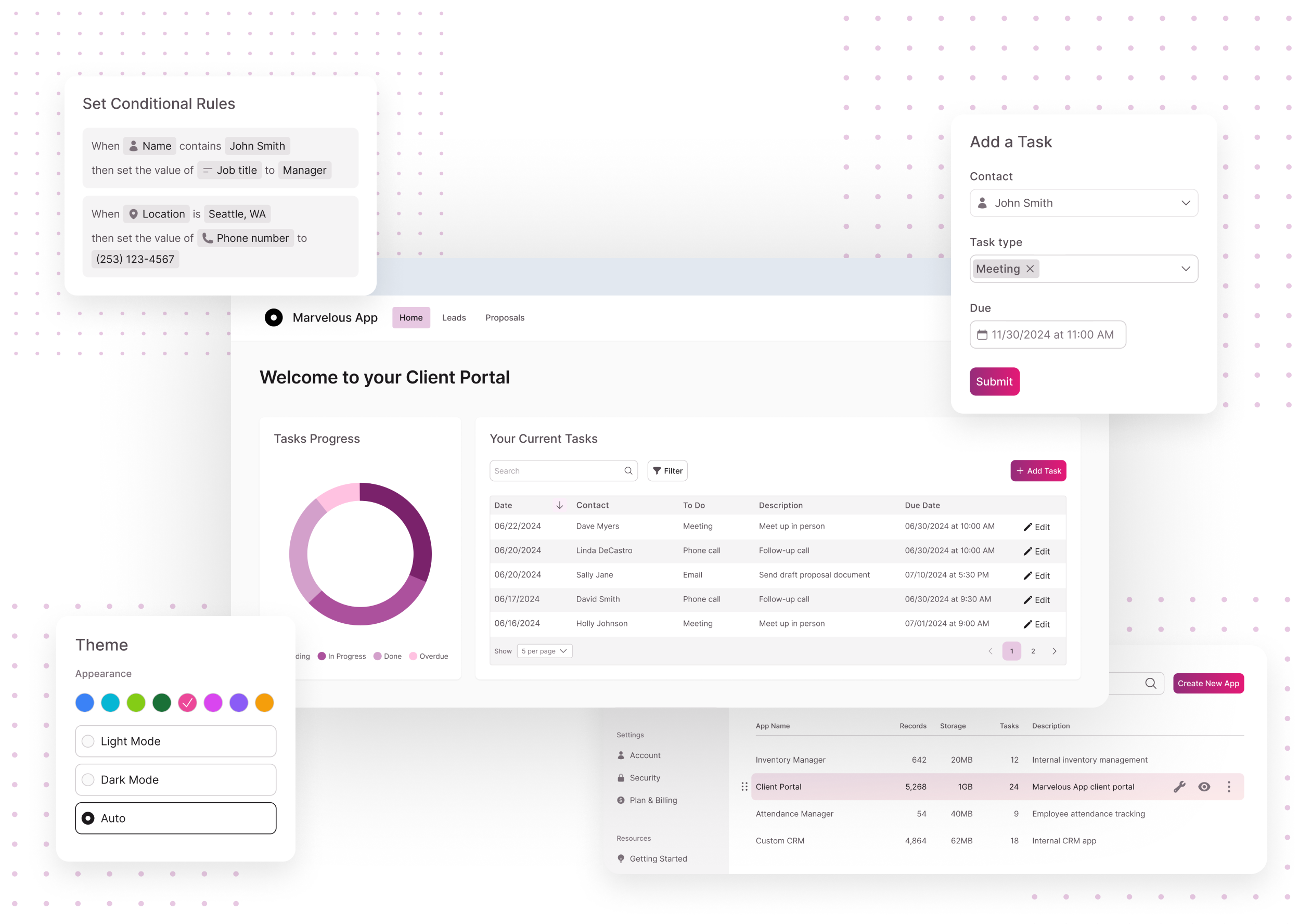Why No-Code is the Future of Open System Database Development for Organizations
Why No-Code is the Future of Open System Database Development for Organizations
Blog Article
Discover How Scalable Databases Can Be Used Without Coding to Enhance Your Service Operations
In today's fast-paced business environment, the capability to manage and analyze information successfully is vital. no-code. Scalable data sources, especially when combined with no-code solutions, use a transformative approach that equips non-technical individuals to enhance operations.
Recognizing Scalable Data Sources
Scalable data sources are necessary for modern company procedures, enabling companies to effectively take care of raising volumes of data without giving up performance. These data sources are designed to adjust and grow to the changing demands of a business, ensuring that they can take care of bigger datasets and even more complicated queries as organizational needs evolve.
Comprehending scalable data sources entails acknowledging their two main types: upright scaling and straight scaling. Vertical scaling, or "scaling up," includes including more power (CPU, RAM) to an existing web server to enhance efficiency. Conversely, straight scaling, or "scaling out," requires including more servers to disperse the load, which typically leads to greater versatility and mistake resistance.
Another critical facet is the architecture of scalable data sources, which can be either non-relational or relational. Relational data sources, such as MySQL and PostgreSQL, are structured and use SQL for queries, while non-relational data sources, like MongoDB and Cassandra, offer more adaptability with disorganized information.
Ultimately, comprehending scalable databases is vital for organizations intending to take advantage of information as a strategic property, allowing them to remain affordable in a progressively data-driven setting.

Benefits of No-Code Solutions
Unlocking the possibility of no-code remedies encourages businesses to improve procedures and boost productivity without the demand for extensive shows understanding. These platforms enable non-technical customers to produce, customize, and manage databases effortlessly, hence democratizing access to technology throughout teams.
One of the primary advantages of no-code solutions is their rate of implementation. Companies can quickly deploy applications and automate processes, significantly lowering the time invested in development cycles. This agility enables organizations to respond promptly to market changes and client needs, promoting an one-upmanship.
Furthermore, no-code systems lower reliance on IT divisions for day-to-day jobs, allowing technological teams to focus on more intricate tasks that call for specialized skills. This shift not only enhances resource allocation however additionally advertises technology within the organization.
Cost-effectiveness is an additional benefit, as no-code remedies can reduce growth and maintenance costs. By reducing the requirement for coding competence, companies can harness the abilities of their existing labor force without the overhead of hiring added employees.
Popular No-Code Data Source Devices
The rise of no-code services has actually brought about the emergence of numerous database tools that deal with services seeking performance and ease of access. These tools empower customers with minimal technical know-how to produce, take care of, and adjust databases effortlessly.

Caspio sticks out for its capability to build web applications without any coding. It enables companies to produce robust databases and release applications quickly, providing to various market requirements. Similarly, Flair offers powerful data and user-friendly user interfaces management capabilities, enabling organizations to construct custom applications tailored to their process.

Usage Situations in Service Workflow
How can organizations take advantage of data source tools to improve their operations? Scalable databases offer organizations with powerful abilities to manage and evaluate information without the demand for extensive coding knowledge. These tools can enhance different business processes, eventually resulting in improved performance and efficiency.
One famous usage situation is customer connection Visit Your URL administration (CRM) Services can use scalable data sources to track client communications, preferences, and feedback, enabling individualized interaction and far better service. By streamlining this info, groups can work together better and reply to consumer demands in real-time.
An additional considerable application is stock management. Companies can use no-code data source tools to monitor supply levels, track deliveries, and forecast need. This ensures optimum inventory levels, reduces waste, and reduces stockouts.
In addition, task management can gain from scalable data sources by enabling groups to handle jobs, target dates, and resources in a linked platform. With real-time updates and data visualization, task supervisors can make educated choices.
Starting With Application
Applying scalable data sources in service operations needs an organized technique to make certain successful integration and use. The very first step is to carry out an extensive needs assessment, identifying specific business requirements, data kinds, and expected growth patterns. This fundamental understanding will certainly lead the option of the suitable database service.
Next, select an user-friendly, no-code data source system that straightens with your operational goals. no-code. Many modern-day services supply intuitive user interfaces, permitting non-technical individuals to take care of information efficiently. After selecting a system, develop a clear data style that lays out just how information will certainly be arranged, accessed, and kept
Training is important; make certain that staff member are equipped with the necessary abilities to utilize the data source. Think about supplying tutorials or workshops to acquaint team with the system's functionalities.
Verdict
In final thought, the combination of scalable databases with no-code options provides significant benefits for company operations. Eventually, leveraging these technologies can lead to boosted efficiency and operational performance, positioning organizations for sustained growth in a competitive landscape.
One hop over to here preferred no-code data source device is Airtable, which combines the capability of a spreadsheet with the power of a data source.Exactly how can services use this link utilize database devices to improve their operations? Services can use scalable databases to track customer communications, preferences, and feedback, enabling personalized communication and far better service.Applying scalable databases in organization procedures calls for a structured method to ensure successful assimilation and application.In verdict, the combination of scalable databases via no-code remedies offers considerable benefits for business procedures.
Report this page